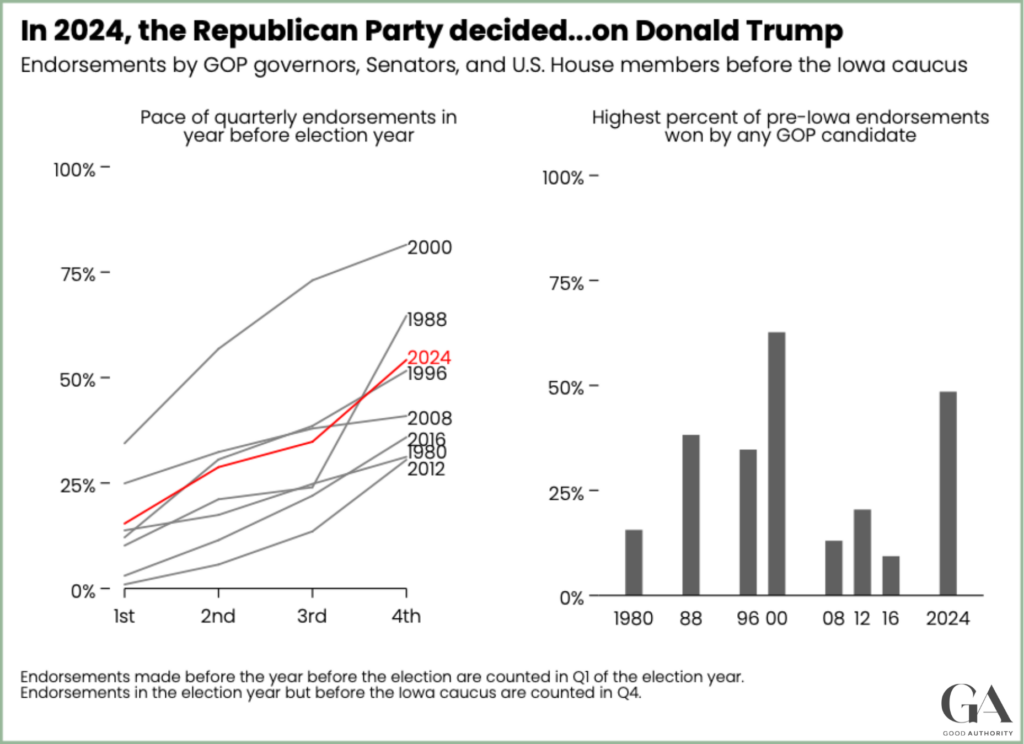As Donald Trump was on the cusp of decisive Super Tuesday wins, a reporter wrote to me to ask:
… whether Trump’s popularity with GOP primary voters was always such that none of these other candidates really had a chance, or whether, in retrospect, there are junctures between 2021 and now where you could make a convincing case that some particular shift in the circumstances of the race … might have yielded a different outcome, or at least a competitive race.
Here’s my answer. No, there was no real chance for another candidate this year – precisely because the Republican Party was in the opposite place as when it nominated Trump the first time in 2016.
In that year, as my coauthors and I show in our book “Identity Crisis,” the GOP was divided. Most elected leaders in the Republican party chose not to endorse any candidate and those who did endorse couldn’t settle on anyone. Many observers saw Trump’s nomination in 2016 as evidence against the thesis of a prominent political science book, “The Party Decides,” which emphasized how party leaders can coordinate on an acceptable nominee before the primaries.
Why 2024 is a different story
This year’s story actually began more than three years ago, immediately after the 2020 election. The party never repudiated Trump or tried to cast him aside. Indeed, most Republicans simply echoed Trump’s false claim that he had actually won. There was no reckoning. There was no “autopsy” of the party’s loss. This positioned Trump to run again.
And when he did, he was a de facto incumbent with many of the accompanying advantages. This was evident in the large number of endorsements he received from prominent GOP leaders. Here are two instructive graphs from the competitive GOP presidential primaries since 1980:

The left-hand graph shows the pace of endorsements in the year before the election year – aka the “invisible primary.” Specifically, this is the percentage of Republican governors, U.S. House members, and U.S. senators who endorsed any Republican presidential candidate. The pace of endorsements was much faster in 2024 than in 2016 and many other years. By the time of the Iowa caucus in January 2024, 54% of these officeholders had endorsed a candidate.
The right-hand graph shows the highest percentage of these endorsements won by any GOP candidate. In 2024, this was Trump: 48% of these officeholders endorsed him. Only a handful endorsed another candidate, and the rest didn’t endorse. Trump emerged nearly as dominant after the 2024 invisible primary as George W. Bush was in 2000.
In other words, these leaders – what in previous years we’d often call “the establishment” – looked at the field of candidates, considered Trump’s history and current predicament (multiple trials, etc.), and considered the alternatives. They came to a pretty clear conclusion: Trump was still their man.
This time around, The Party Decided.



